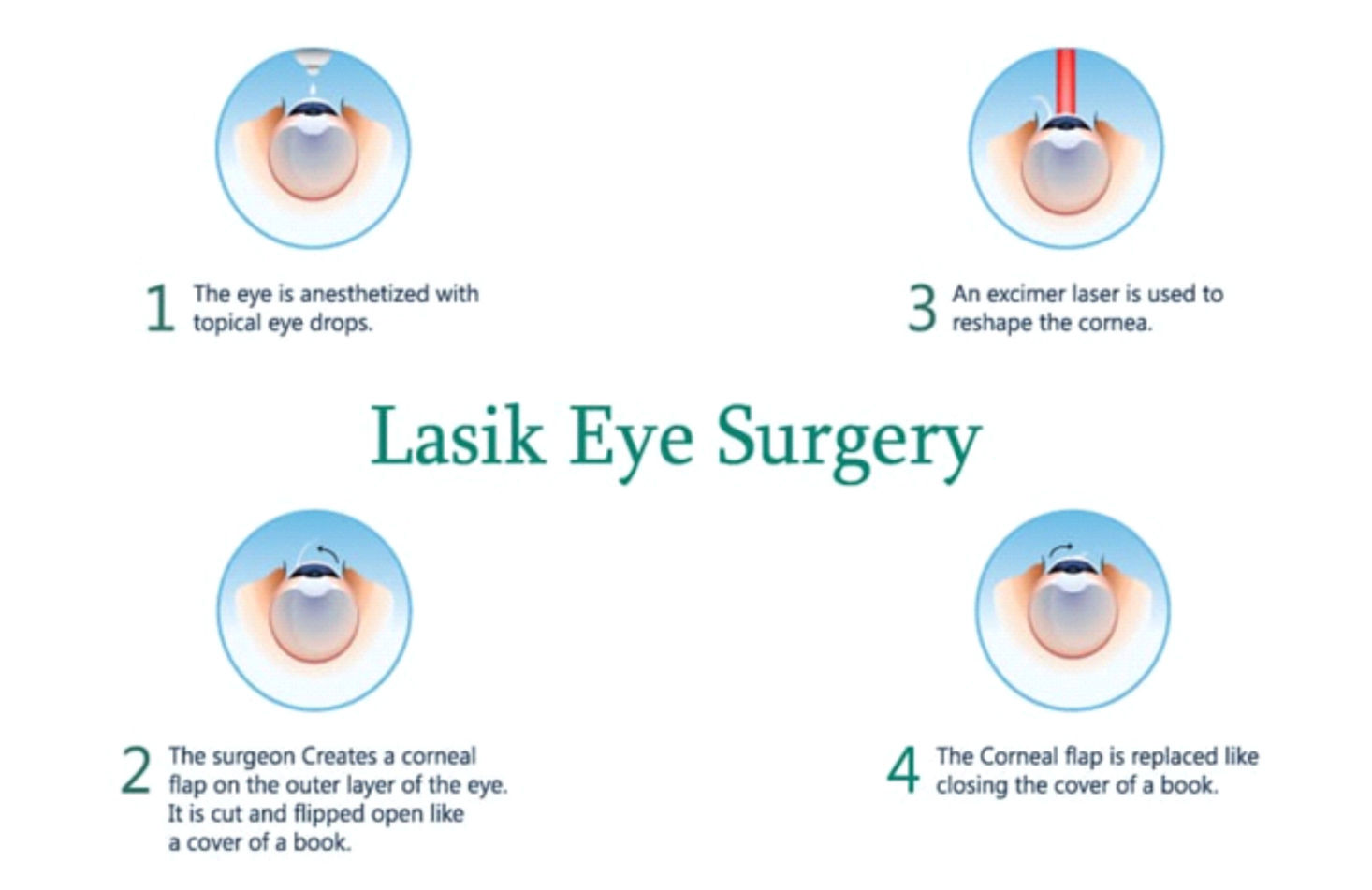
1) Myopia, or Nearsightedness;
2) Hyperopia, or Farsightedness;
3) Astigmatism

A myopic eye is longer than normal or has a cornea that is too steep, as a result of which the light rays focus in front of the retina. Close objects look clear, but distant objects appear blurred.

Hyperopia is a term used to describe the condition of farsightedness. The causes of hyperopia are typically genetic and involve an eye that is too short or a cornea that is too flat, as a result of which images focus at a point behind the Retina. People with hyperopia can usually see distant objects well, but have trouble focussing on nearby objects

ASTIGMATISM (cylindrical error) occurs when the incoming light rays are unable to reach a common focus within the eye. Astigmatism distorts or blurs vision for both near and far objects. The cornea is the clear front window of the eye. A normal cornea is round and smooth, like a basketball. When you have astigmatism, the cornea curves more in one direction than in the other, like a football. It is possible to have astigmatism in combination with myopia or hyperopia.
Refractive errors can be corrected with eyeglasses, contact lenses, or surgery.
Eyeglasses
are the simplest and safest way to correct refractive errors. Your eye care professional can prescribe appropriate lenses to correct your refractive error and give you optimal vision.
Contact Lenses
work by becoming the first refractive surface for light rays entering the eye, causing a more precise refraction or focus. In many cases, contact lenses provide clearer vision, a wider field of vision, and greater comfort. They are a safe and effective option if fitted and used properly. It is very important to wash your hands and clean your lenses as instructed in order to reduce the risk of infection.
If you have certain eye conditions you may not be able to wear contact lenses. Discuss this with your eye care professional.
Refractive Surgery
aims to change the shape of the cornea permanently. This change in eye shape restores the focusing power of the eye by allowing the light rays to focus precisely on the retina for improved vision. There are many types of refractive surgeries.Refractive surgical procedure intended to reduce a person's dependency on glasses or contact lenses. The most common refractive surgical procedures performed today are:


Good candidates for the ICL include patients who:
• Are between the ages of 18 and 45 years.
• Have dry eyes, very high myopia (above -12.00D), or a thin cornea (non-LASIK candidate).
• Are nearsighted or farsighted, including those with mild, moderate, and high power with or without occurrence of astigmatism. The Toric ICL™, capable of correcting myopia and astigmatism together and combines two procedures into one.
• Have proper anterior chamber depth as will be determined by the eye surgeon or ophthalmologist after a comprehensive eye exam.
• Have not had a change in their eyeglass prescription of more than 0.50 Diopters in a year.
• Are not currently pregnant.
• Have no known allergies to medications used during refractive surgery or no other contraindications.
The ICL is made of Collamer®, a highly biocompatible advanced lens material which contains a small amount of purified collagen. Collamer does not cause a reaction inside the eye and it contains an ultraviolet filter that provides protection to the eye.